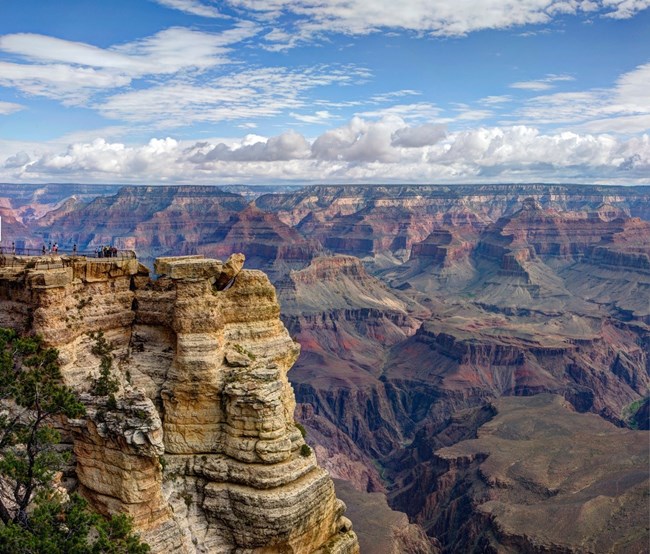Learn about NRCAs
The Natural Resource Condition Assessment (NRCA) Program provides framework, funding, and publishing support to parks to aid in the synthesis and documentation of natural resource conditions. Condition assessment reports are a tool to describe selected park resources, and record a snapshot of their current condition, identify trends, and identify potential or current threats and stressors. Understanding the condition and trend of natural resources is key for parks and NPS planners to appropriately prioritize and allocate stewardship resources.

Photo by W. Tyson Joye, NPS
Traditional NRCA Report: 2019
The Greater Grand Canyon Landscape Assessment used a trans-boundary, collaborative, and spatial approach to assess resources across an area determined by watersheds rather than administrative boundaries. This area includes nearly all the North American life zones and spans nearly a mile in elevation on average. Examining the diverse and inaccessible landscapes that create this park in a time of rapid ecological changes and increasing human demands is an essential task for park management.The Greater Grand Canyon Landscape Assessment was written in the format of a Natural Resource Condition Assessment and published in 2018. Grand Canyon park resource managers and Northern Arizona University staff organized workshops and technical work groups for important stakeholders. Within this format, the final study structure and list of 26 resource topics was determined:
- Biorichness |
- Northern leopard frog |
||||||||
- Ecological integrity |
- River avifauna |
||||||||
- Fire |
- Native fish |
||||||||
- Rare and endemic species |
- Caves |
||||||||
- Riparian communities |
- Seeps and springs |
||||||||
- Bighorn sheep |
- Archeological resources |
||||||||
- California condor |
- Ethnographic resources |
||||||||
- Eagle |
- Night sky |
||||||||
- Invertibrates |
- Daytime viewshed |
||||||||
- Mexican spotted owl |
- Recreational resources |
||||||||
- Mountain lion |
- Natural acoustic environment |
||||||||
- Mule deer |
- Wilderness |
||||||||
- Northern goshawk |
|
The results of this assessment identified many resources in good condition or warranting moderate concern. The condition of several endangered species, the extend of human intrusion, and the extent of riparian communities warranted significant concern. The assessment allows park management to prioritize park resources for continued management while considering the stressors that were also identified, including climate change, altered hydrologic regime, development, wildfire, introduced exotic species, resource extraction, and user impacts. This assessment, while difficult to encompass such a large area and multiple landscapes, provides much needed integrated perspectives to inform sound decisions and implement efficient management strategies.
For other reports and natural resource datasets visit the NPS Data Store.
Source: NPS DataStore Collection 7765 (results presented are a subset). To search for additional information, visit the NPS DataStore.
Last updated: February 25, 2022
